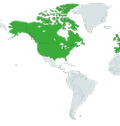


Whotf talks like this anyway?
is an accusation and not an opinion besides also being wrong.



Whotf talks like this anyway?
is an accusation and not an opinion besides also being wrong.
How USians Attempt To Solve Every Problem They Encounter Forever


No each map is explained on that comm. You assigning it ‘imperial core’ and asking for an explanation is some JAQing off sealioning imo. Theses maps correlate how interests of countries align around various issues, and the ‘same map’ comes up a lot because of how these same countries often agree on things in contrast to the the rest of the world. It’s not some socio-political theory, it’s just the reality of how these countries align into blocs that correlate with maintaining the current US hegemonic status quo.
The two maps that really ‘explained’ this concept for me were the map of countries that ‘condemn China’s treatment of Uyghur Muslims’ contrasted with the map of ‘countries that recognize Palestine’. It shows how this bloc of countries want to demonize China while supporting the ongoing genocide of Palestine’s indigenous peoples. The principles they espouse are unmasked in the light of the truth of this comparison.


It’s beautiful to see the culmination of so much work that Valve has done over the years with the Steam Machines and the Steam Controllers, etc. Gives me hope for an open VR future running on linux.
birdwatchers: voyeuristic super fans
sport hunters: homicidal stalkers


https://lemmygrad.ml/c/alwaysthesamemap
lots of examples of what this map emoji means here
I particularly like this one of the countries that recognize Palestine, which is the inverse of the ‘same map’.
https://lemmygrad.ml/pictrs/image/f8d50ef2-6638-43e2-86e6-d1ece0d35add.png


wow it’s actually not the exact same map 

this seems like a modicum of progress


when it’s just the two of you in the empty cube, and you end up sharing the same alcove

“I had a meeting for a kind of Marvel-y movie, and I had an attitude,” White said. “I think I played it all wrong.” He said he told the Marvel executives, “‘Tell me about why should I do your movie,‘” which did not come off well. “They were like, ‘Fuck you,’” White recalled, “and I was like, ‘Right on.'”
having self respect vs MCU execs is a legit super power though


mentions they’ve been recruiting mercs from Ukraine too



a bit more Mariner than Tendi, but it’s close and varies according to material conditions



due to high inflation you only get the complementary 1-hour back, the remainder was applied to the overdraft fees


ClimateTown has a good video on the astroturf campaigns that have been used in the last few years.
Distilling value down into a single metric causes lots of problems. I think some people have been talking about that for a while now.
I think the correct answer is sharks.

https://en.wikipedia.org/wiki/Bombing_of_North_Korea
During the campaign, conventional weapons such as explosives, incendiary bombs, and napalm destroyed nearly all of the country’s cities and towns, including an estimated 85% of its buildings.
A total of 635,000 tons of bombs, including 32,557 tons of napalm, were dropped on Korea. By comparison, the U.S. dropped 1.6 million tons in the European theater and 500,000 tons in the Pacific theater during all of World War II (including 160,000 on Japan). North Korea ranks alongside Cambodia (500,000 tons), Laos (2 million tons), and South Vietnam (4 million tons) as among the most heavily-bombed countries in history.
In an interview with U.S. Air Force historians in 1988, USAF General Curtis LeMay, who was also head of the U.S. Strategic Air Command, commented on efforts to win the war as a whole, including the strategic bombing campaign, saying “Right at the start of the war, unofficially, I slipped a message in “under the carpet” in the Pentagon that we ought to turn SAC lose with some incendiaries on some North Korean towns. The answer came back, under the carpet again, that there would be too many civilian casualties; we couldn’t do anything like that. We went over there and fought the war and eventually burned down every town in North Korea anyway, some way or another, and some in South Korea, too…Over a period of three years or so we killed off, what, 20 percent of the population of Korea, as direct casualties of war or from starvation and exposure? Over a period of three years, this seemed to be acceptable to everybody, but to kill a few people at the start right away, no, we can’t seem to stomach that.”
Sahr-Conway Lanz, who holds a Ph.D. in the history of American foreign relations, has written extensively about the legacy and impact on American discourse on the international norm of noncombatant immunity. He states:
“During the war, American military and civilian officials stretched the term “military target” to include virtually all human-made structures, capitalizing on the vague distinction between the military and civilian segments of an enemy society. They came to apply the logic of total war to the destruction of the civil infrastructure in North Korea. Because almost any building could serve a military purpose, even if a minor one, nearly the entire physical infrastructure behind enemy lines was deemed a military target and open to attack. This expansive definition, along with the optimism about sparing civilians that is reinforced, worked to obscure in American awareness the suffering of Korean civilians in which U.S. firebombing was contributing.”
The song was inspired by Korean war veteran that John McCrea met in a bar.


It’s pretty wild to think about how many people have heard his singing voice without knowing really anything about him.
It’s an example of how the socialist history of the US was completely memory-holed. The labor movement makes a modicum of progress, and it is very quickly filtered out of cultural memory via lazy jokes.
I gave you a perfectly reasonable explanation of what the same map means. You refuse to accept it and write like this. Disengage.